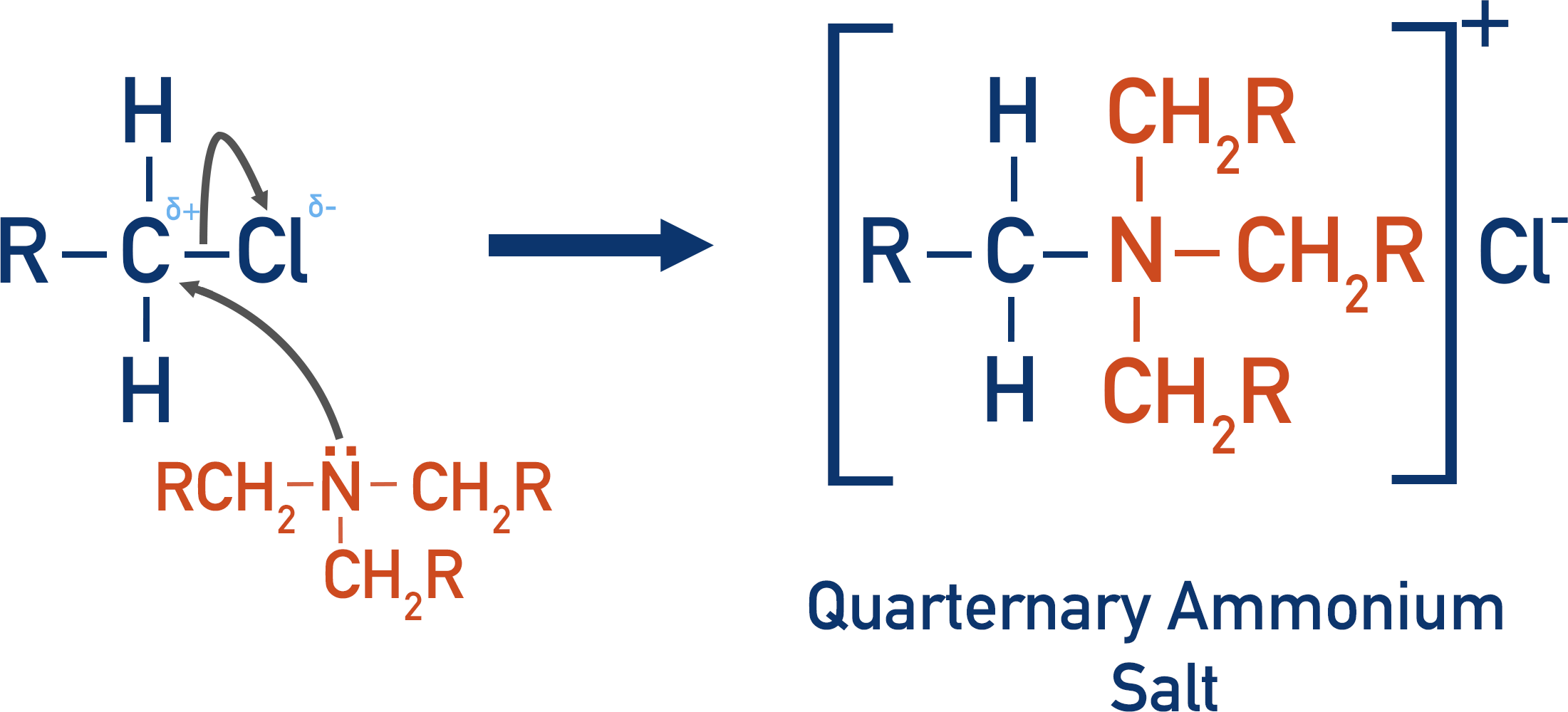Video Tutorial Producing Secondary and Tertiary Amines
Quick Notes Producing Secondary and Tertiary Amines
- If a halogenoalkane is reacted with an excess of ammonia, a primary amine is formed.
- When insufficient ammonia is present to undergo substitution with all the halogenoalkane molecules, the primary amines that did form undergo further substitution and can become secondary, tertiary and quaternary amines.
- Once four substitutions have happened, the nitrogen has four bonds and forms a positively charged ammonium ion. This quaternary ammonium ion is attracted to negative halide ions, forming a quaternary ammonium salt.
Full Notes Producing Secondary and Tertiary Amines
Primary amines are produced by the nucleophilic substitution of ammonia with a halogenoalkane. During this mechanism, an excess of ammonia is used that reacts with all the halogenoalkanes and an ammonium-halide salt is formed.

If only a small amount of ammonia is used, not all the halogenoalkanes can undergo the nucleophilic substitution reaction with the ammonia. This means a mixture of primary amines and halogenoalkane molecules is produced. The primary amine will now act as a nucleophilie and react with the halogenoalkane, forming a secondary (and tertiary) amine.

The nitrogen atom in an amine group has a lone pair of electrons and can behave as a nucleophile in the same way as ammonia.

The halogenoalkanes that did not have a chance to react with the ammonia now react with the primary amines present.

The mechanism is exactly the same as the one that formed a primary amine from the halogenoalkane and ammonia, the only difference is an amine is substituted with a halogen rather than ammonia with a halogen.
If there are still unreacted halogenoalkanes, further substitution can occur between the secondary amine formed above and the unreacted halogenoalkanes. Tertiary amines are formed. Again, the mechanism is similar to the above.

The secondary amine formed is able to react with another halogenoalkane in a further nucleophilic substitution reaction.

This time, producing a tertiary amine.

Again, the tertiary amine formed is able to react with another halogenoalkane in a further substitution, this time the nitrogen atom ends up with four bonds. The nitrogen gains a positive charge as a result and a ‘quaternary ammonium salt’ is formed.

No further substitutions can occur once a quaternary ammonium ion is produced, as there are no more hydrogen atoms that can be lost, and the ion is unable to act as a nucleophile.
We’ve launched our new site! 🎉
Course-specific notes with built-in search!
AP • A-Level (AQA • CIE • Edexcel • OCR) • IB • NCERT 11 + 12
over 750+ new pages and 3,500 images.
Visit the new homepage
